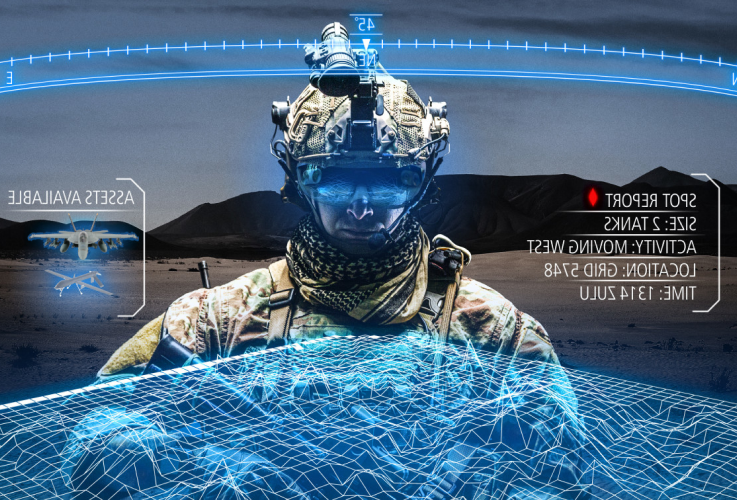

Metaverse has become a need for telecommunication because it offers a platform for users to create and interact in virtual worlds. It provides a safe, secure and interactive environment for communication and collaboration between users, which is critical for the success of any telecommunication business. Metaverse also allows users to create and customize their own virtual spaces, which can be used for a variety of purposes, such as marketing, training and customer service. Finally, it is a cost-effective way to provide an immersive experience for users, which is essential for telecommunication businesses to stay competitive in today's market.
As technology advances and more people become familiar with virtual worlds, the demand for virtual communication services is likely to increase. For example, Metaverse-based video conferencing, e-commerce, and other services are expected to become more popular. The increased adoption of virtual reality (VR) and augmented reality (AR) technologies will also drive the growth of Metaverse telecommunications, as more people use these technologies to communicate with each other. Furthermore, the emergence of 5G networks and the development of cloud-based services will also help to accelerate the growth of Metaverse telecommunication.
Global Metaverse Telecommunication Market Report 2020-2025: According to this report, the global metaverse telecommunication market is estimated to grow at a CAGR of 18.0% during the forecast period 2020-2025.
Global Metaverse Telecommunication Market Size: This report estimates the global metaverse telecommunication market size to reach USD 7.3 billion by 2025.
Global Metaverse Telecommunication Market Share: In 2020, the market share of the global metaverse telecommunication market was dominated by North America, with a share of approximately 35%.
Global Metaverse Telecommunication Market Revenue: This report estimates the global metaverse telecommunication market revenue to reach USD 7.1 billion by 2025.
Global Metaverse Telecommunication Market Trends: Emerging trends in the global metaverse telecommunication market include the increasing popularity of social media platforms such as Fortnite, Roblox, and Minecraft, the growing demand for virtual reality, and the increasing use of immersive technologies.







It's important to note that the metaverse is a rapidly evolving field and new use cases and possibilities are likely to emerge over time. Metapp Factory explores this technology with the latest developments and be open to experimenting with different approaches. There are a number of different ways that the telecommunications industry could potentially utilize a metaverse, depending on the specific use case and goals of the organization. Some potential solutions could include:
Telecom companies could set up virtual customer service centres within a metaverse, allowing customers to interact with representatives in a 3D environment. This could be especially useful for troubleshooting complex technical issues that may be difficult to explain over the phone or via text-based chat.
Telecom companies could also use a metaverse to demonstrate their products and services to potential customers. This could include virtual tours of cellular towers, demonstrations of new technologies like 5G networks, or even virtual product launches.
Telecom companies could use a metaverse to train their employees, both in terms of technical skills and in terms of customer service. This could include simulations of various scenarios, as well as virtual classes and lectures.
Companies can conduct trade shows, conferences and other networking events within metaverse which can be beneficial for the companies to showcase their products and services to the potential customers and partners.
Telecom companies can also use metaverse for marketing their products and services to the potential customers. They can create virtual billboards, virtual shops, and other VR-based marketing content within the metaverse to promote their products and services.
Metaverse can also be used by the telecom companies to remotely monitor and manage their networks in real-time which can be useful for troubleshooting and maintenance.

Till now, NFT has been a big thing in the crypto world. And now, the metaverse NFT is the next big thing happening to this NFT world. Whenever you want to develop a virtual space exclusively for your cryptocurrency users, Metappfactory is there for you. Being a leading metaverse development company in India, we will help you virtual metaverse NFT marketplace development where your users can manage their digital asset-related operations. The blockchain-optimized metaverse NFT development solutions will gear your customer toward social interaction, gaming, and purchase.

Till now, NFT has been a big thing in the crypto world. And now, the metaverse NFT is the next big thing happening to this NFT world. Whenever you want to develop a virtual space exclusively for your cryptocurrency users, Metappfactory is there for you. Being a leading metaverse development company in India, we will help you virtual metaverse NFT marketplace development where your users can manage their digital asset-related operations. The blockchain-optimized metaverse NFT development solutions will gear your customer toward social interaction, gaming, and purchase.

Till now, NFT has been a big thing in the crypto world. And now, the metaverse NFT is the next big thing happening to this NFT world. Whenever you want to develop a virtual space exclusively for your cryptocurrency users, Metappfactory is there for you. Being a leading metaverse development company in India, we will help you virtual metaverse NFT marketplace development where your users can manage their digital asset-related operations. The blockchain-optimized metaverse NFT development solutions will gear your customer toward social interaction, gaming, and purchase.
The telecommunication industry plays a significant role in the development and growth of the metaverse by providing the necessary infrastructure and technology for users to access and interact with the virtual world. This includes high-speed internet connections, data centers, and other hardware and software systems needed to support the metaverse.
There are many potential applications of the metaverse in the telecommunication industry, including virtual customer service, virtual training and education, virtual events and conferences, and virtual product demonstrations and sales.
One of the main challenges of metaverse development in the telecommunication industry is the need for high-bandwidth, low-latency internet connections to support immersive, real-time interactions. Another challenge is the need for robust and scalable hardware and software systems to support a large number of users simultaneously. Additionally, there are concerns about data privacy and security in the metaverse, as well as the potential for misuse or abuse of the virtual world.
The metaverse is a rapidly evolving field, and it is difficult to predict exactly how it will develop in the future. However, it is likely that the metaverse will become increasingly sophisticated and immersive, with more realistic virtual environments and more advanced virtual reality technology. It is also possible that the metaverse will become more integrated with other technologies, such as artificial intelligence, the internet of things, and blockchain